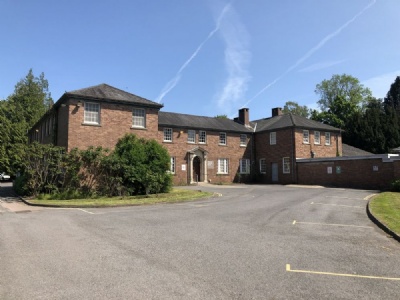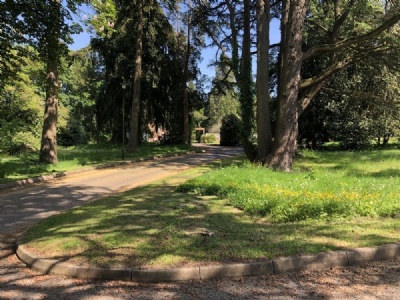Abergavenny
About 50 kilometres northeast of Cardiff and less than 10 kilometres from the border with England is a small town called Abergavenny. A picturesque little town with about 15,000 inhabitants and described as the gateway to Wales. Just to the northeast of the town is a small hospital called Maindiff Court Hospital, where Hitler’s deputy, Rudolf Hess, were imprisoned between June, 1942, and October, 1945. Hess had all by himself flown to Scotland in May, 1941, and parachuted just outside Glasgow. The purpose of the flight was to bring peace between Germany and Britain. His request to meet the Duke of Hamilton and later Winston Churchill himself did not happen.
Britain was not at all interested in Hess’ peace proposal, they didn’t even hear him out what he had to offer, instead he was imprisoned as a prisoner of war. First in the London Tower, then Mytchett Place southwest of London and in June, 1942, he was transferred to Maindiff Court Hospital in Abergavenny, Wales. Abergavenny is a small town in the Welsh countryside, secluded and easy to guard. Although it was not a state secret that Hess was in Abergavenny, he was kept away from all publicity and attention. Although Hess was under constant surveillance, he had certain freedom and was able to make excursions in the surroundings, accompanied by guards of course. For people living in the city, Hess was no secret and occasionally they did catch a glimpse of him.
After the end of the war in May, 1945, Hess was transferred to Nuremberg in October where he was put on trial at the main tribunal. He escaped the death penalty and was sentenced to life imprisonment in 1946. He was taken with other convicted war criminals to Spandau prison in Berlin. Hess died in August 1987, having been the only remaining prisoner in Spandau for 21 years.
Current status: Preserved (2023).
Address: Ross Rd, Abergavenny NP7 8NF.
Get there: Car.
Follow up in books: Manvell, Roger, Fraenkel, Heinrich: Hess (1973).







The hospital is about a half-hour walk from Abergavenny. The hospital was still in use in 2023 and consists of four independent departments whose patients have mild mental disorders. What department or building Hess occupied I do not know and it’s probably something the hospital doesn’t want to highlight. The hospital premises is not in any way cordoned off and you can walk around freely without anyone paying any attention to you.